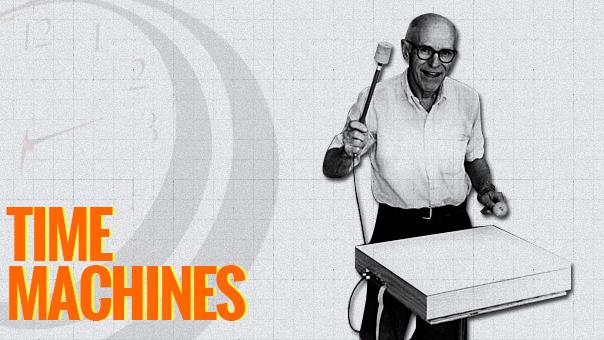musical interface
Latest

Max Mathews' one-man electronic orchestra
Welcome to Time Machines, where we offer up a selection of mechanical oddities, milestone gadgets and unique inventions to test out your tech-history skills. Conduct an electronic orchestra, right from your living room! It may seem like a fever dream headline from the 1950s, but the physical results of Max Mathews' years of work in computer music wouldn't fully materialize until the '80s. His Radio Drum (aka Radio Baton) -- although a continual work-in-progress -- was a groundbreaking method of controlling computer-synthesized sound through a predominantly wireless three-dimensional interface. Many of its unique abilities were courtesy of technological visionary Bob Boie's capacitance research, creating "a much more participatory way of enjoying music," as Mathews described in Stanford University's Brainstorm. The Radio Drum could track surface hits and even hovering positions, and use that data to control a multitude of audio parameters. It was one of many projects that Mathews worked on during his lifetime and played a part in earning him the honorary title of "Father of Computer Music."

PocoPoco musical interface box makes solenoids fun, gives Tenori-On pause (video)
Think SIGGRAPH's all about far-out design concepts? Think again. A crew from the Tokyo Metropolitan University IDEEA Lab was on hand here at the show's experimental wing showcasing a new "musical interface," one that's highly tactile and darn near impossible to walk away from. Upon first glance, it reminded us most of Yamaha's Tenori-On, but the "universal input / output box" is actually far deeper and somewhat more interactive in use. A grand total of 16 solenoids are loaded in, and every one of 'em are loaded up with sensors. Users can tap any button to create a downbeat (behind the scenes, a sequencer flips to "on"), which will rise in unison with the music until you tap it once more to settle it (and in turn, eliminate said beat). You can grab hold of a peg in order to sustain a given note until you let it loose. There's a few pitch / tone buttons that serve an extra purpose -- one that we're sure you can guess by their names. Those are capable of spinning left and right, with pitch shifting and speeds increasing / decreasing with your movements. The learning curve here is practically nonexistent, and while folks at the booth had no hard information regarding an on-sale date, they confirmed to us that hawking it is most certainly on the roadmap... somewhere. Head on past the break for your daily (video) dose of cacophony. %Gallery-130382%

